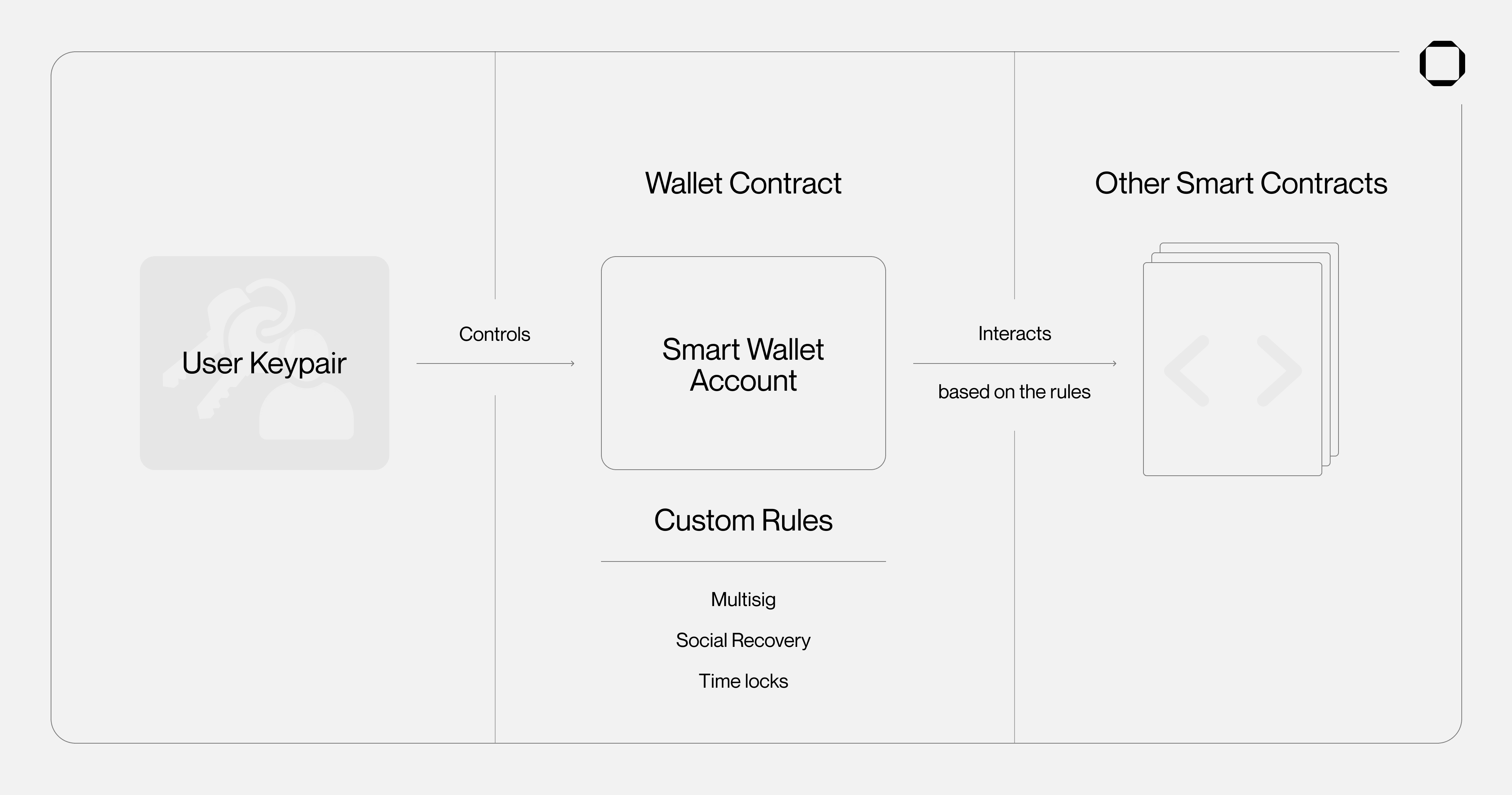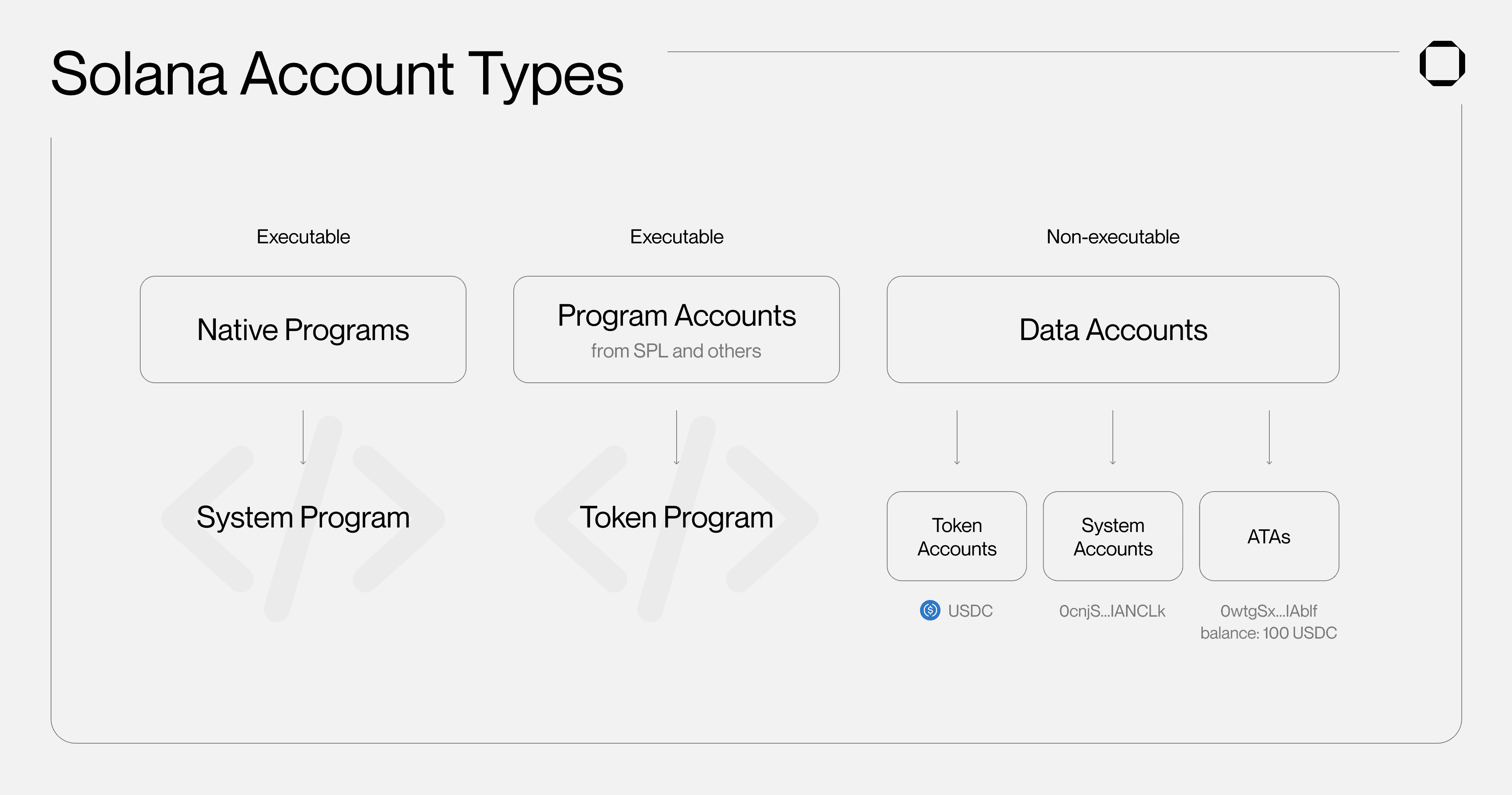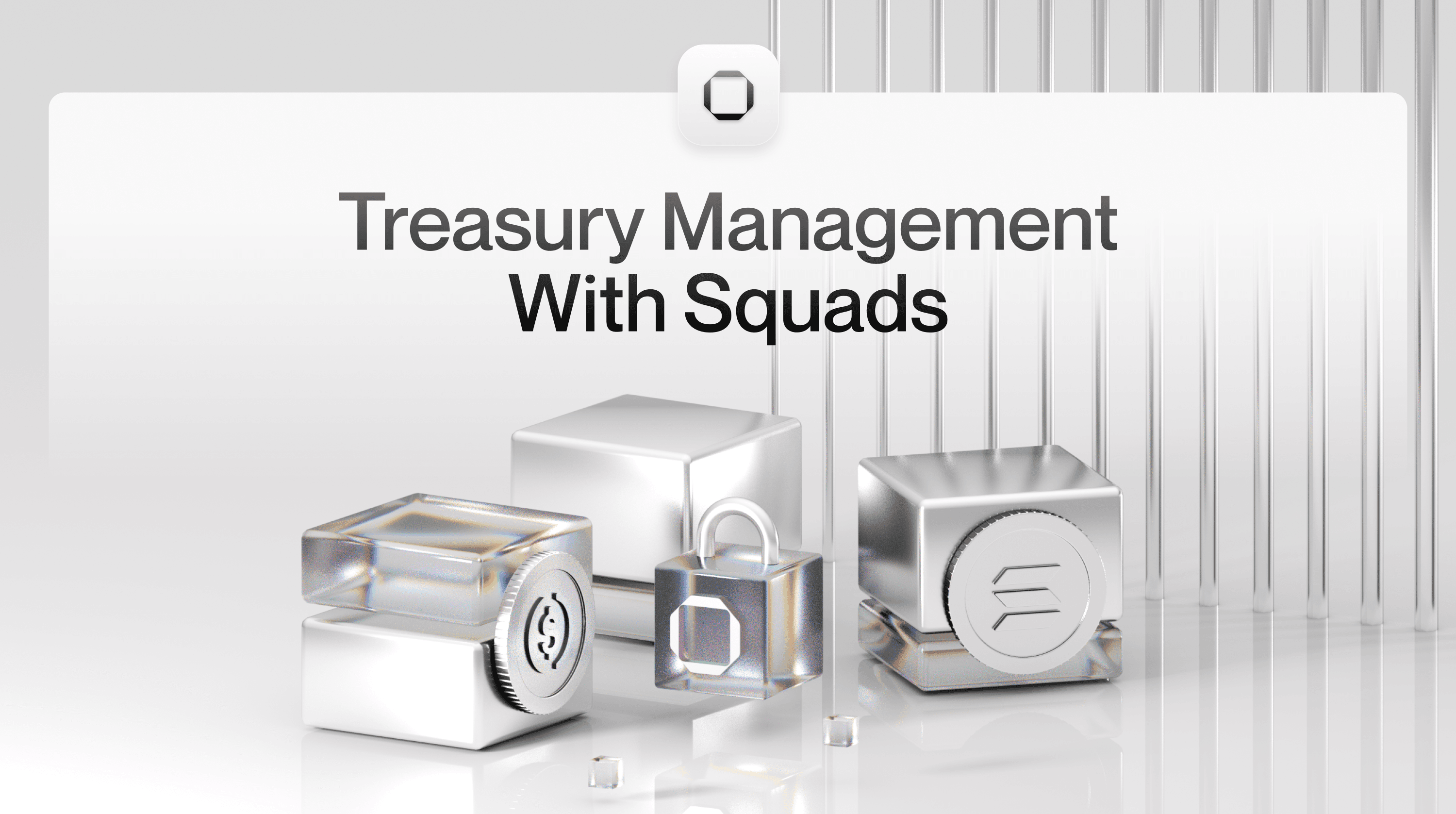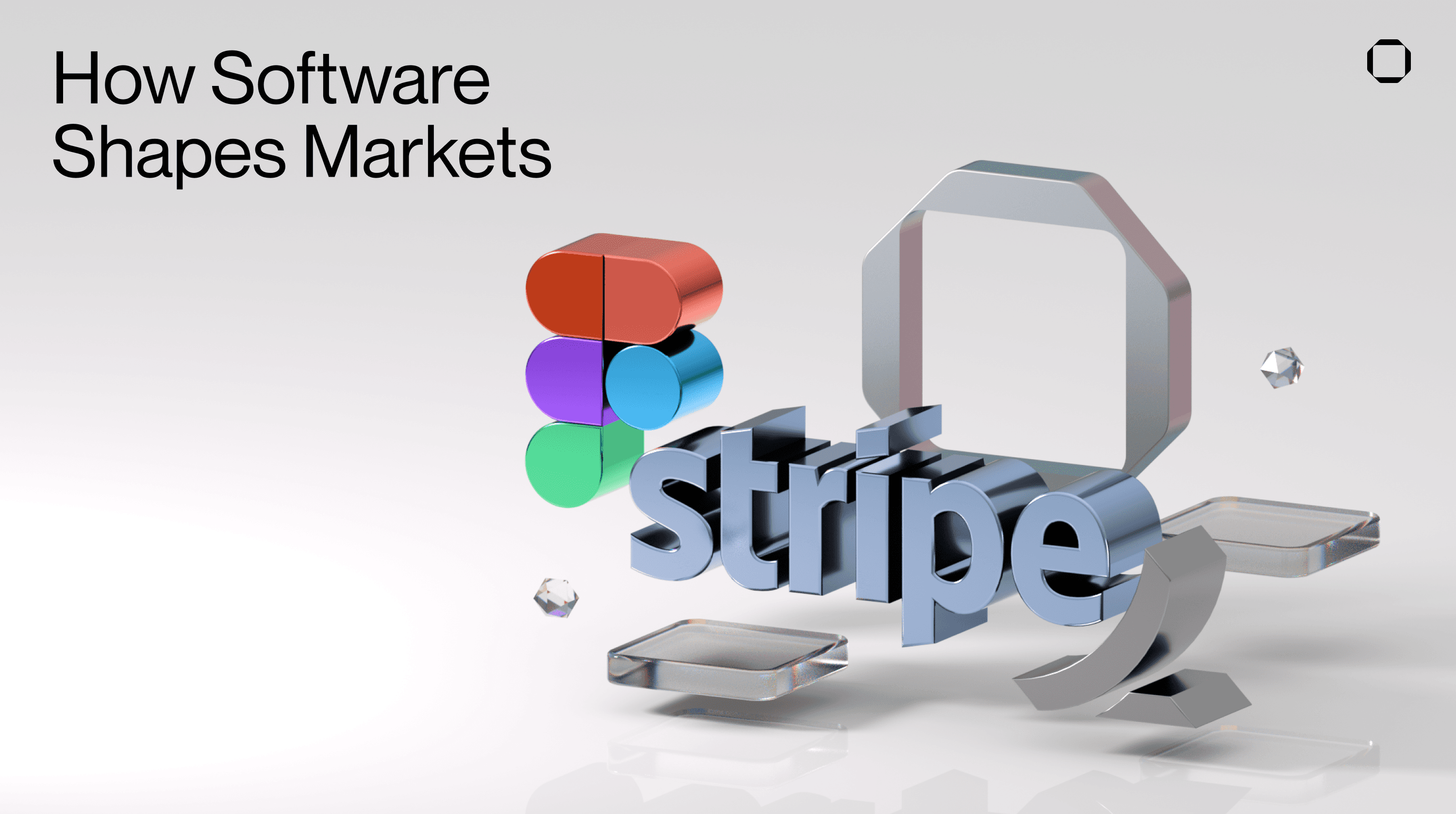For a long time, crypto wallets were reserved exclusively for advanced users, offering limited capabilities and hindering the onboarding of newcomers. Recent advancements in account abstraction are finally facilitating the creation of new self-custody solutions that could potentially attract the next generation of users into crypto. While it has been implemented natively in newer blockchain networks such as Solana, account abstraction has recently gained significant interest across the Ethereum community, primarily due to the long-awaited ERC-4337 upgrade.
This article aims to introduce the general concept of account abstraction (AA) in crypto while navigating the AA capabilities of both Ethereum and Solana networks and understanding their differences. Lastly, we will explore the smart contract wallet standard that we built at Squads to facilitate developing account abstraction on Solana.
Note: The terms “account” or “user account” will often be mentioned in this article. An account is not a wallet. In crypto, a wallet is only an interface or application that lets users interact with blockchain accounts.
What is Account Abstraction
Account abstraction is a concept that has been around in crypto since 2015, with Vitalik being a prominent advocate for it. While AA is a broad term, it roughly refers to the process of abstracting away the rigidity and built-in structures of user accounts within a blockchain, making them more flexible and adaptable while still allowing them to interact with the network. This abstraction enables developers to create user-friendly on-chain accounts with custom logic, where they can set their own conditions for storing assets and executing transactions, instead of relying on the built-in rules of standard blockchain accounts that are not suited for everyday use.
Beyond traditional blockchains, where account structures are bound to a single owner and a specific keypair (private and public keys), AA makes it possible for developers to create smart contracts that can act as user accounts. These smart contracts can interact with multiple accounts, perform cross-program communications, and integrate a wide range of customized logic.

Although the term “account abstraction” can be used both in Ethereum and Solana, it is important to understand that its implementation and features differ between the two blockchains. Generally speaking, account abstraction in crypto involves the customization of:
account structures: developers can define their own account structures for specific purposes and how the data is stored;
validation and execution schemes: enabling implementation of custom transaction validation and execution logic;
interaction between accounts: facilitating composability between different user accounts/smart contracts in how they can work together.
With AA, the idea is thus to allow and simplify the process for developers to create user accounts for any need, that are no longer blocked by a set structure, and are natively supported by the network. In the words of Argent, “account abstraction moves crypto from the current approach of one-account-fits-all, where someone can lose everything with a small mistake, to a future where an account can be tailored to someone's needs. Where you can build a safety net for self-custody. And give them much slicker UX too.”
The ultimate goal of AA is to make the underlying technology (blockchain) of the user account imperceptible to users.
Account Abstraction on Ethereum and ERC-4337 Explained
In Ethereum, account abstraction has always been an ongoing area of research and development due to the rigidity and structure of Ethereum accounts. Until ERC-4337, there was no standardized approach for developers to create and implement custom user accounts, which has led to a poor user experience to store and manage assets on-chain.
Due to the late implementation of a standard for account abstraction, most Ethereum wallets today such as Metamask only allow users to create and manage EOA wallets. These are a type of Ethereum account with limited customization and flexibility. Externally Owned Accounts (EOAs) are controlled by private keys and can only be used to store data (ETH, ERC-20, or ERC-721 tokens) and interact with smart contracts by signing transactions. Because they have a built-in structure, these accounts offer limited functionality and cannot have custom logic implemented, which restricts the range of actions for managing assets and interacting with smart contracts. For a long time, EOAs were the only way to sign and interact with Ethereum smart contracts.
Smart (contract) wallets emerged as a solution to address EOAs limitations by offering wallets based on Contract Accounts - a type of account that brings account abstraction to Ethereum and unlocks new possibilities in the way user accounts function. A Contract Account is a smart contract that stores data, and code. Thus, its behavior is determined by the code within the smart contract and is not controlled by a private key. This design enables Ethereum Contract Accounts to have programmable logic and literally create any type of customized account for users. Smart wallets leverage the capabilities of contract accounts, which makes them a more advanced and user-friendly alternative to traditional Externally Owned Accounts (EOAs) as they can offer a plethora of use cases: social recovery, paying fees in any token (e.g. USDC), recurring payments, session keys, and more.
Contract accounts have never really been widely used to create and manage user wallets due to their complexity and cost of use. They were not fully supported by the Ethereum Virtual Machine (EVM) and posed challenges when attempting to interact with the network as they couldn’t initiate transactions themselves. While solutions like Argent and Safe have found workarounds to implement account abstraction on Ethereum for creating smart wallets, there was no clear standard for developers to build custom user accounts in a truly decentralized and secure manner - until EIP-4337 was implemented and became the ERC-4337 standard.
The Role of ERC-4337
ERC-4337 is a new smart contract wallet standard that allows to have highly programmable user accounts natively on Ethereum without making changes to the protocol. Rather than altering the consensus layer to support smart contract wallets, a new system has been integrated alongside the standard transaction process of EVM. This advanced system bundles Contract Accounts actions and their associated signatures and then sends them to a specific “mempool” where validators can gather them to create a “bundle transaction”. They are then included in Ethereum blocks just like regular transactions.
Additionally, ERC-4337 changes the way Contract Accounts function by outsourcing complex safety features to a universal wallet contract known as the "entry point." This contract manages operations like fee payments and EVM code execution, enabling developers to build composable accounts without security concerns around centralization.
ERC-4337 is the first step towards implementing native account abstraction and making contract accounts, particularly smart contract wallets, more efficient and flexible on EVM. It is already in the process of being supported by prominent smart wallets on Ethereum, such as Safe.
Account Abstraction on Solana - Always Has Been
Compared to Ethereum, Solana has always been a blockchain that natively enables account abstraction since its architecture is fundamentally different from EVM. Accounts on Solana are by default more flexible, simplifying the development of complex interactions between them and smart contracts. In fact, everything in Solana is considered as an account. Solana’s account model treats all accounts as “storage buckets”, meaning they can store data, tokens, as well as any information associated with a specific program/smart contract (smart contracts on Solana are named programs).

There are 2 main account types on Solana:
executable (program accounts) - these are smart contracts that store code and are more often referred to as “programs”;
and non-executable (data accounts) - they can receive tokens or data, but cannot execute code.
Typically, traditional Solana wallets allow users to create data accounts/non-executable accounts. These are regular accounts used for storing data, tokens information and signing transactions. Data accounts on Solana share some similarities with Ethereum's External Owned Accounts (EOAs) in the sense that both types of accounts are primarily used by users to hold and manage their tokens, as well as interacting with decentralized applications (dApps) and smart contracts. Even though they offer additional features than Ethereum’s EOAs, they still remain unfriendly to use for neophytes as they only offer a single method to sign transactions: the use of a private key.
What makes Solana special is that its account model natively enables programs to create and manage specific accounts, offering developers the ability to define custom rules and logic for managing them. This feature, that further extends account abstraction capabilities on Solana, is called Program Derived Addresses (PDAs). Solana programs, conversely to data accounts, are executable accounts. They contain code that can be executed. With PDAs, developers can set up a set of rules and mechanisms to sign transactions. It allows programs to authorize different on-chain operations on behalf of a controlled account (PDA) in a way that is recognized and accepted by the Solana network without needing a private key.
PDAs are a key feature of account abstraction on Solana, since they can be used to enable actions without requiring private keys, reducing the burden on end-users to manage them. They can also allow implementation of custom rules and logic in how to access, store, and manage SPL assets. Smart wallets on Solana like Squads leverage PDAs functionality to enable complex customization of account management such as multi-signature (multisig) or batched transactions. Moreover, PDAs serve as the foundation for Cross-Program Invocation (CPI), which allows Solana accounts to interact and compose with one another.
While both Solana and Ethereum aim to provide a flexible environment for building custom account structures, we can see that their approaches to AA differ significantly. Ethereum features a more rigid account structure with distinct account types, whereas Solana employs a more flexible account model, simplifying development and enabling complex account interactions. While EVM developers must rely on workarounds or wait for protocol layer updates, SVM developers can create self-custody products leveraging native AA without any constraints.
But even if the customization of user accounts is more advanced and decentralized on Solana since it is already enabled at the protocol level, there are still many challenges standing in the way of ubiquitous adoption of account abstraction-powered solutions like smart wallets. One of them is poor support for workflows involving smart wallets in the ecosystem, as well as protocols that are trying to artificially limit their composability by preventing other programs from calling into them and/or keeping their code private and not providing IDL (interface) for it.
Squads Protocol - The Smart Contract Wallet Standard That Unlocks Solana’s AA Capabilities
ERC-4337 has established a standard on Ethereum for building self-custody solutions like smart contract wallets that implement AA. Until recently, Solana was lacking simplification for building self-custody and treasury management products on top of its PDA functionality, although it natively enables a high level of account abstraction.
Squads Multisig Program Library (or SMPL) is a set of open-source programs on Solana that anyone can leverage to build self custody products on top of - making it the ultimate smart contract wallet infrastructure for SVM. Solana’s account model has supported account abstraction since inception, and Squads Protocol makes it easier for developers to work with it.
Squads Protocol stack allows Solana developers to create customizable self-custody solutions tailored to specific use cases and user needs. SMPL has been built to support effortless implementation of AA on Solana, and facilitates developers in how they can build smart wallets. With it, they can build advanced features like social recovery, granular controls/permissions on funds held, or even remove the need to save a 12/24 word seed phrase to access and manage SPL assets.
By unlocking the full potential of account abstraction, Squads Protocol paves the way for a more seamless and user-friendly experience for onboarding the next generation of crypto users on Solana. Ultimately, the importance of AA lies not only in its implementation by the network but also in the features that developers can create using it as a foundation. Whether users are on Ethereum or Solana, implementing account abstraction enables the creation of self-custody solutions that make them forget they are using a blockchain and bridge the gap with web2 financial products.
In our next article, we'll explore some account abstraction use cases that Solana builders can consider developing.
About Squads
Squads is a crypto company operations platform that simplifies management of developer and treasury assets for teams building on Solana and SVM. Open source, formally verified, immutable, audited by Neodyme and OtterSec, Squads enables teams to secure their treasuries, programs, validators, tokens in a multisig and jointly manage them.
Learn more
Squads: https://squads.so/blog/what-is-squads
Squads Protocol: https://squads.so/blog/solana-svm-smart-contract-wallet-infrastructure
Code: https://github.com/Squads-Protocol/squads-mpl



